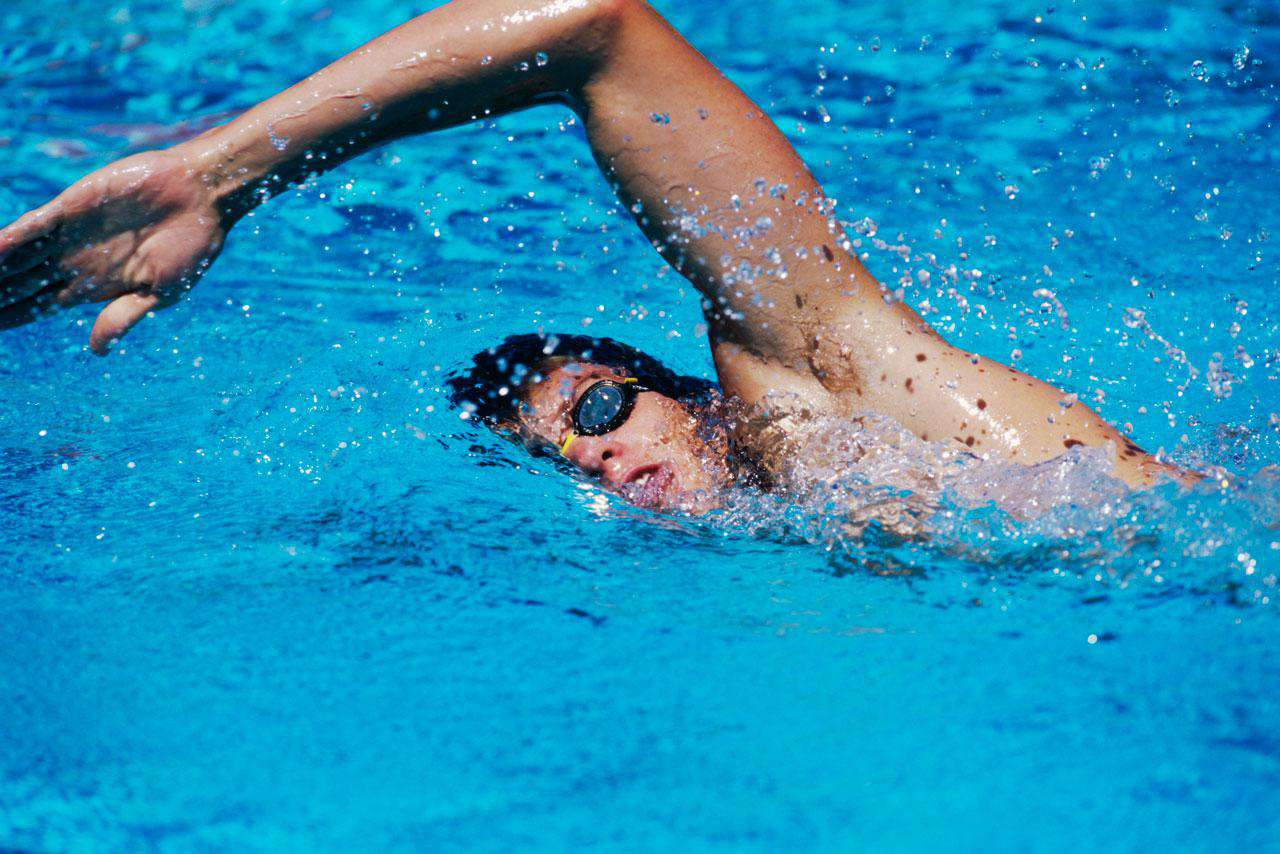Front crawl, also known as freestyle, is one of the most popular and efficient swimming strokes. Whether you’re a beginner or looking to improve your skills, this comprehensive guide will provide you with an in-depth understanding of front crawl swimming. We’ll cover the basics, techniques, common mistakes, building confidence and stamina, and essential safety tips for beginners. Let’s find out this swimming style with Swim Time Log.

Front Crawl Swimming: An Overview
Front crawl is often considered the fastest and most efficient swimming stroke. In this stroke, swimmers alternate arm movements while performing a flutter kick to propel themselves through the water. Understanding the fundamentals of front crawl is essential before diving into more advanced techniques.
Basic Front Crawl Techniques
To master front crawl, you must grasp the basic techniques, including:
- Body Position: Maintain a horizontal position with your body parallel to the water’s surface.
- Arm Movement: Alternate your arm strokes, reaching forward, pulling through the water, and recovering above the surface.
- Breathing: Incorporate rhythmic breathing by turning your head to the side while one arm is extended.
- Leg Movement: Execute a flutter kick, keeping your legs close together, and kick from your hips.
- Timing: Synchronize your arm strokes and leg kicks to maintain a smooth, continuous motion.
Developing Efficient Front Crawl
Efficiency in front crawl comes with practice and attention to detail. Some key aspects of developing efficient front crawl include:
- Streamlining: Minimize resistance by keeping your body in a streamlined position and reducing unnecessary movements.
- Stroke Technique: Focus on a high elbow catch, an efficient pull, and a smooth recovery.
- Rhythm and Timing: Maintain a consistent rhythm to enhance propulsion and minimize drag.
- Breathing Control: Develop a breathing pattern that suits your level of fitness and stamina.
- Pacing: Learn to pace yourself to swim longer distances comfortably.
Common Mistakes and How to Avoid Them
Front crawl can be challenging for beginners, and common mistakes often occur. Some of these include:
- Over-rotating: Excessive body rotation can lead to poor streamline and added drag.
- Wide Arm Entry: An incorrect arm entry can reduce efficiency and disrupt the flow of the stroke.
- Holding Breath: Failing to exhale while your face is in the water can cause anxiety and reduce stamina.
- Kicking Too Wide: A wide leg kick can slow you down and create extra resistance.
- Understanding these mistakes is the first step to correcting them and improving your front crawl technique.

Building Confidence and Stamina
Building confidence and stamina in front crawl requires consistent practice. To enhance your abilities:
- Gradual Progression: Start with shorter distances and gradually work your way up to longer swims.
- Drills and Exercises: Incorporate specific drills to improve your technique and build stamina.
- Strength Training: Strengthen your core, arms, and legs to enhance your overall swimming performance.
- Mental Preparation: Develop mental strategies to stay focused and confident while swimming.
Swimming Safety for Beginners
Safety is paramount in swimming, especially for beginners. Before hitting the pool or open water, consider these essential safety tips:
- Learn to Float: Practice floating and treading water to ensure you can stay afloat in emergencies.
- Buddy System: Swim with a buddy or within the presence of lifeguards when possible.
- Know Your Limits: Avoid swimming in deep or rough waters until you’re confident in your abilities.
- Water Awareness: Be aware of currents, tides, and weather conditions in open water.
- Basic Water Rescue: Learn basic water rescue techniques, such as reaching, throwing, and rowing assists.
- Remember that building confidence and skills in swimming takes time, and safety should always be your top priority.
Conclusion
Front crawl is a rewarding and efficient swimming stroke that anyone can master with dedication and practice. By understanding the basics, refining your techniques, avoiding common mistakes, building confidence, and prioritizing safety, you can become a more skilled and confident front crawl swimmer. So, dive into the pool or open water with the knowledge and skills you’ve gained from this guide, and enjoy the countless benefits that front crawl swimming has to offer.
Read more: Effective Workout Plan: Calisthenics and Weight Training Combined
AUTHOR
Sang Nguyen
Sang Nguyen is a former national swimmer for Vietnam who has transitioned into coaching. With a passion for fostering a healthy swimming community and connecting like-minded individuals,......Read More
BLOG
Maybe You Are Interested
Good Swim Meet Snacks: What to Eat for Optimal Performance
Good nutrition is crucial for swimmers to maintain energy, recover quickly, and perform at their...
Read More...Optimizing Your Performance: The Best Diet for Swimming Training
Optimizing your performance in swimming is not just about rigorous training; it’s equally crucial to...
Read More...Achieve Peak Performance with This Diet Chart for Swimmers
Whether you’re a novice or an expert swimmer, understanding the right diet is crucial for...
Read More...Eating Like a Champion: Exploring the Diet of Michael Phelps
Michael Phelps, renowned for his Olympic triumphs, has a diet as extraordinary as his swimming...
Read More...Muscle Gain for Swimmers: Tailoring Your Diet for Strength
Swimming is a demanding sport that requires a tailored approach to nutrition to support muscle...
Read More...A Comprehensive Diet Plan To Gain Weight For Swimmers
Swimming is a demanding sport that requires meticulous attention to nutritional needs to optimize performance,...
Read More...